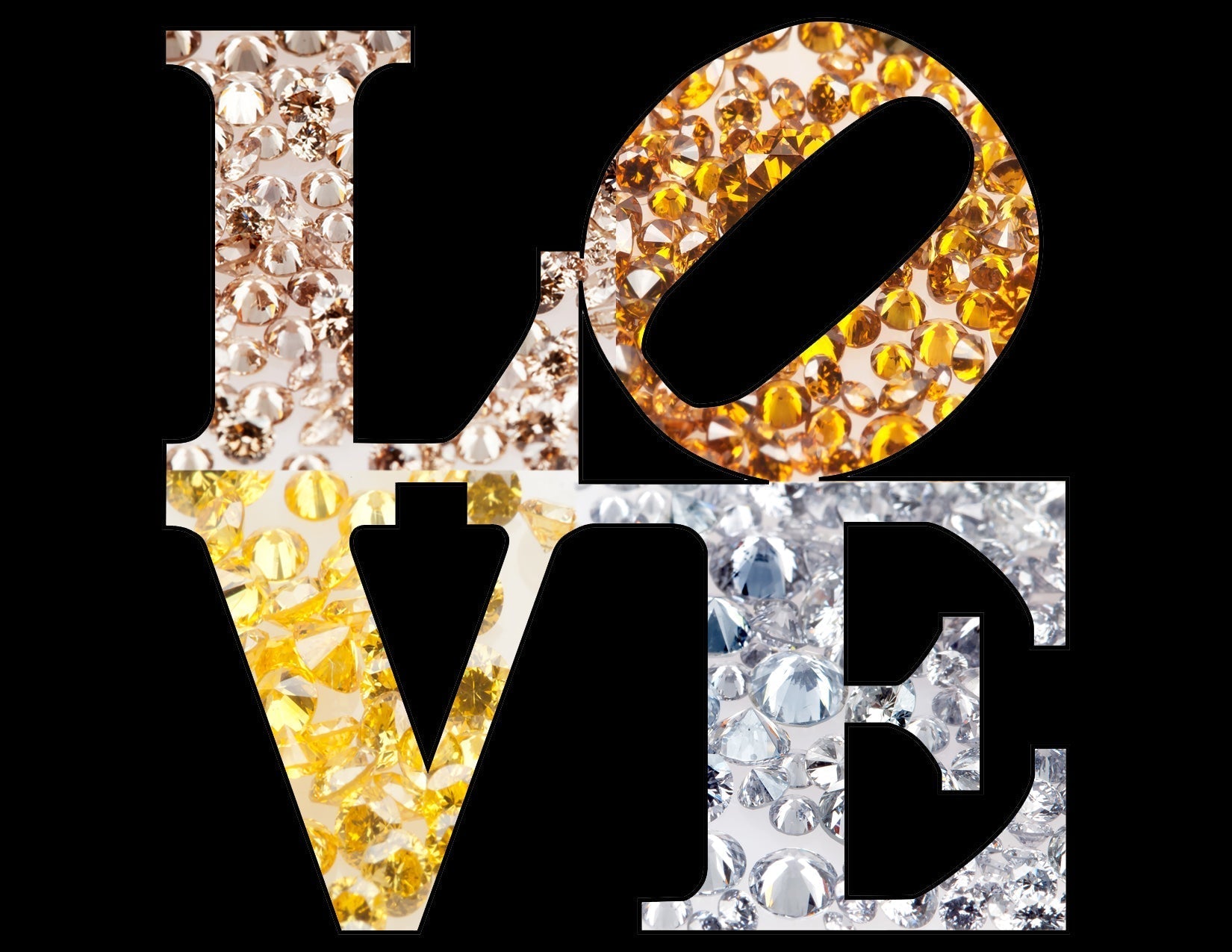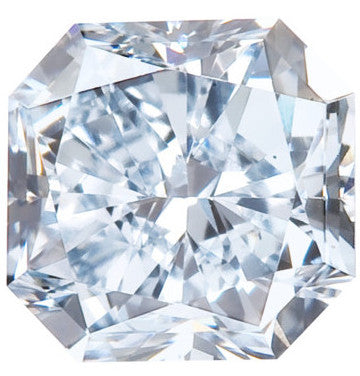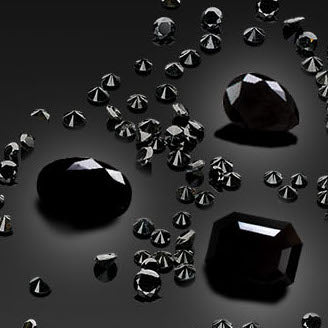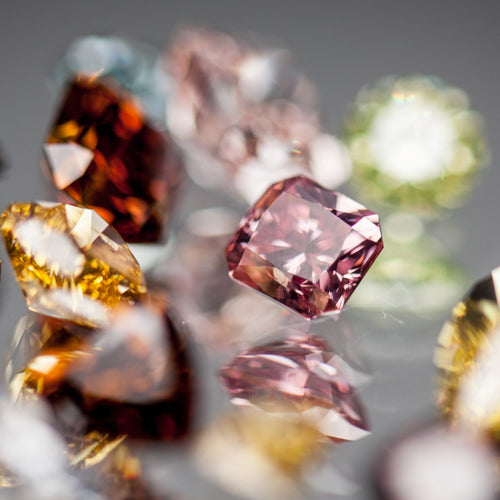





Blue Diamonds vs. Sapphires

The Earth is a colorful place. From its fragrant flowers to its graceful birds, there are all kinds of species in the most vibrant, beautiful hues. And although the human eye can perceive millions of colors, one, in particular, seems to represent our home best: blue. We refer to Earth as the “blue planet”; it’s the color of the sky, and we see it reflected in lakes, seas, and oceans. Being surrounded by it is perhaps why it’s f so many people's favorite color . Blue has a soothing feeling and brings a sense of calm and relaxation.
But beyond the sky and bodies of water, there is little blue in nature. It is, in fact, very uncommon.
For the longest time in history, blue was regarded as a luxurious color linked to royalty and richness. Metal oxides and minerals were used to create famous pigments such as Cobalt blue or Ultramarine. Dying fabrics blue or using it in paintings was expensive and reserved for the higher classes.
Nowadays, creating blue objects, fabrics, and art has become much more accessible and economical, but its longtime association with prosperity prevails.
Blue Treasures
Corundum, a crystalline mineral, is naturally transparent, but can often have different colors depending on the presence of certain metal impurities. Red Corundum is best known as ruby, and Blue Corundum is known as sapphire.
In jewelry, sapphire is probably the most popular blue stone. However, diamonds can also naturally display this hue. Blue diamonds, like most Fancy color diamonds, are less known, probably because they are scarcer and hard to come by.
If you love fine jewelry with blue gemstones, you will find this comparison between sapphires and Blue diamonds very interesting. Both gemstones have different qualities and advantages that might appeal to your personal taste or budget.
Origin and Color
Blue sapphires
Sapphire, or blue corundum, can be found in many places around the world; from the island of Madagascar to the mountains of Montana. Each corundum deposit has its own unique conditions that favor one particular blue share over another. Sri Lanka, formerly known as Ceylon, continues to be an important source; this is where the term “Ceylon sapphire” comes from. Other relevant sources include India, Australia, Afghanistan, Zambia, Colombia, Mozambique, Tanzania, Thailand, and Vietnam.
The blue tone and its intensity are determined by the concentration of iron, titanium, chromium, vanadium, or magnesium traces in the stone’s crystalline structure.
It’s a standard industry practice to heat-up sapphires in order to intensify their color. However, this process should always be disclosed by the seller and noted in the lab report. Bear in mind that heated sapphires cost less than natural, unheated sapphires.
Blue diamonds
Fancy blue diamonds owe their hues to the unusual presence of Boron atoms. Natural blue diamonds are currently found in South Africa and Botswana.
India was the most important source of Fancy color diamonds at one point in history, but the Golconda mines were closed in the 1800s. The Argyle mine in Australia famously produced Pink diamonds, and Blue diamonds were also found there. However, this mine has also been exhausted and closed in 2020.
The color of natural blue diamonds tends to have either green or gray as a secondary undertone. This produces hues that look different from those of sapphires, typically more subdued.
Durability And Appearance
Hardness
Corundums including blue sapphires are classified as 9 on the Mohs scale of hardness an absolute hardness of 400. Blue diamonds, like all natural diamonds, score the highest spot 10 with an absolute hardness of 1500. In this comparison, Blue diamonds seem like the clear winner.
To put it simply, hardness measures a material’s resistance to deformation. And for gemstones, this means resistance to scratches. This is where the saying comes about only a diamond being able to scratch another one. And that’s the reason why it’s always recommended to store diamond jewelry in individual pouches or a case with appropriate dividers, to prevent them from accidentally rubbing and scratching each other.
Refractive Index
Diamonds and sapphire, like most gemstones, are valued and desired for their formidable sparkle. Light return is measured with specialized equipment and a refractive index is assigned. The refractive index of diamonds is much higher than that of sapphires. This means Blue diamonds look more brilliant than sapphires thanks to their refractive properties.
Something Blue
Sapphires and Blue diamonds are both beautiful gemstones with different properties and price points.
Why purchase a blue diamond?

Fancy blue diamonds are rarer, which is why they command higher pricesin the current market, but this also means they have a higher potential as an investment.
Natural blue diamonds don’t usually have such saturated colors as Sapphires do, but they offer more durability, brilliance, and value.
—
At Langerman Diamonds, we have a wonderful selection of natural Blue diamonds with hues ranging from greenish blues like our Peacock and Turquoise diamonds to our icy Steel, Indigo, and Sky diamonds.
Contact us to find the perfect color diamond for you.


















